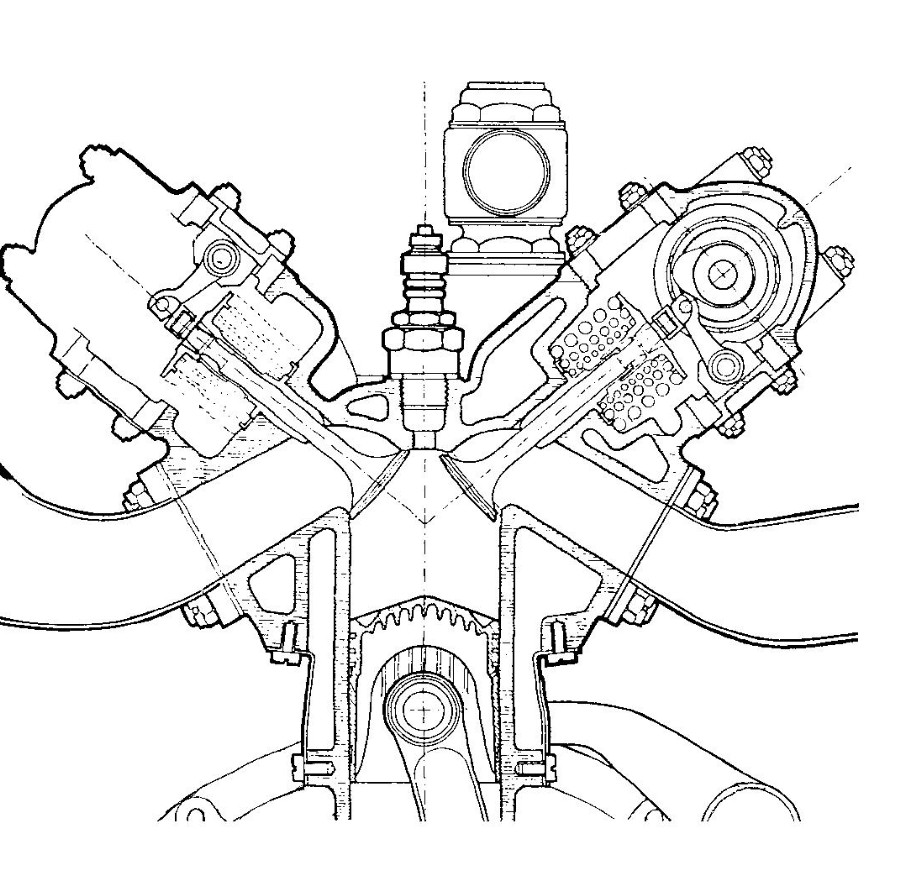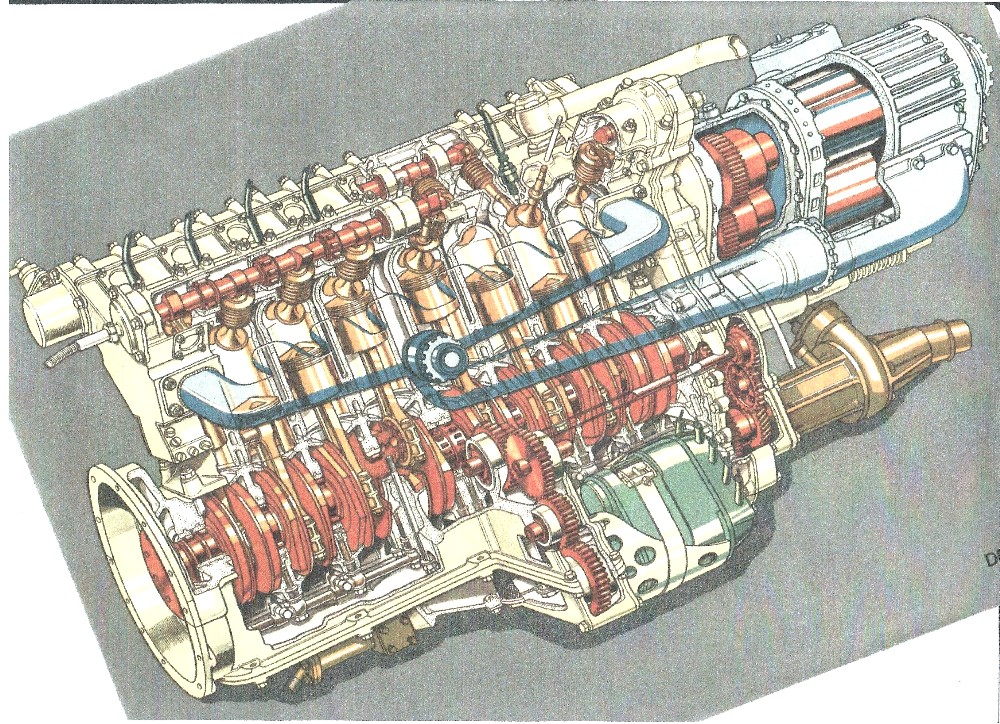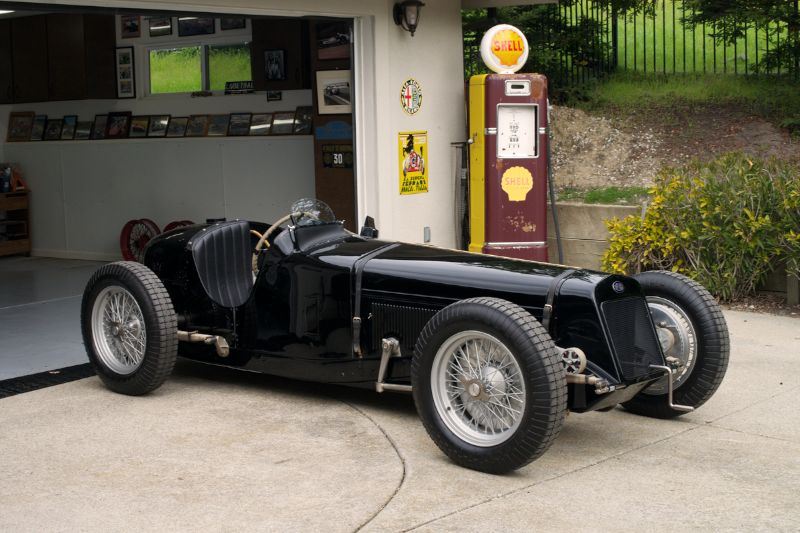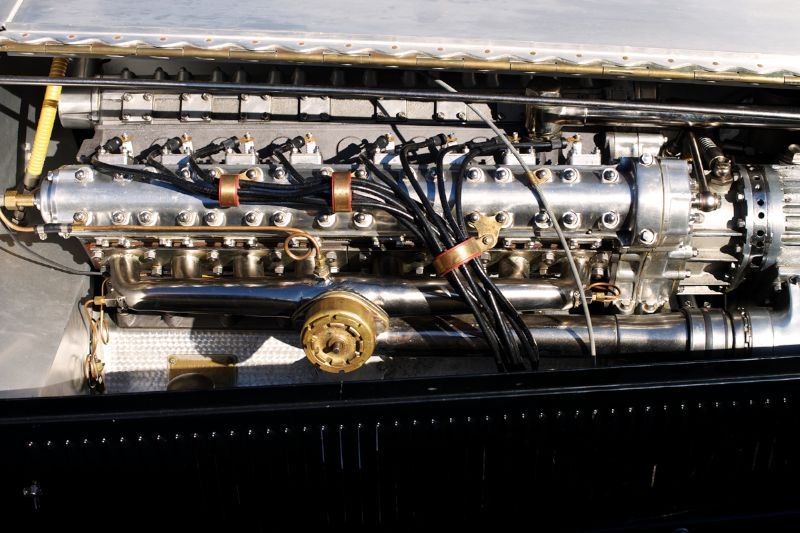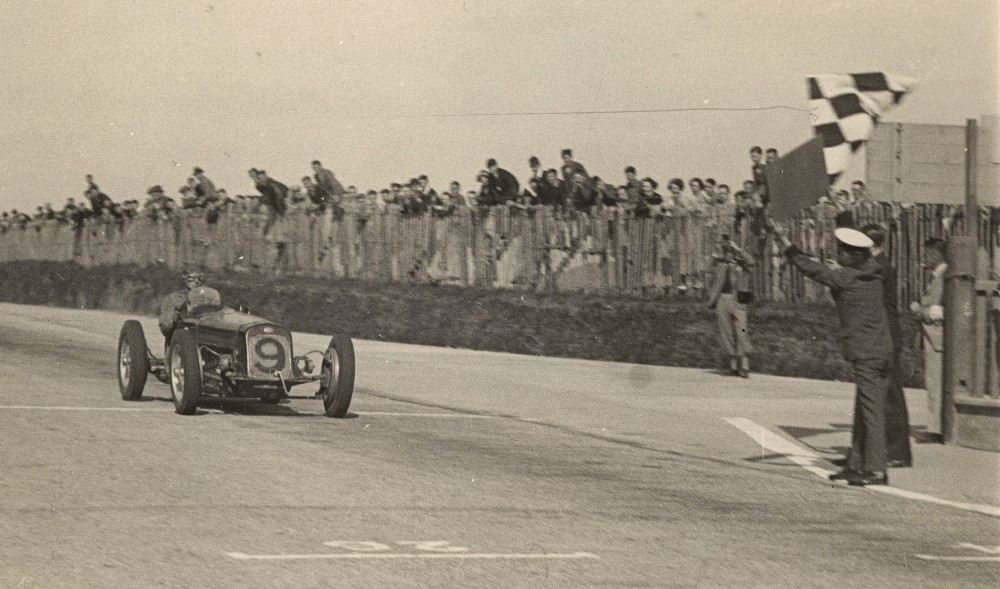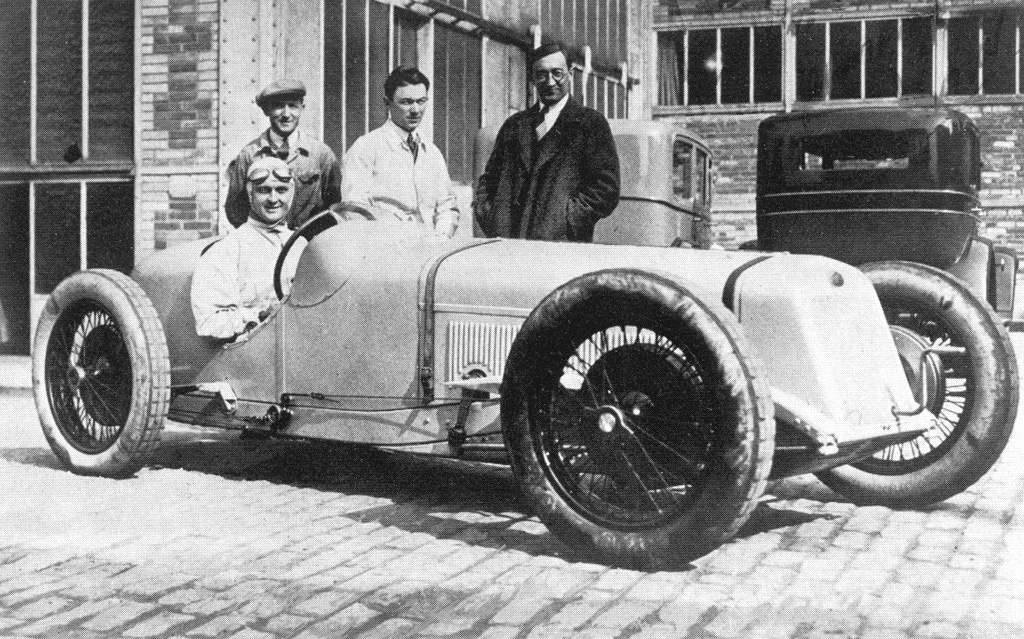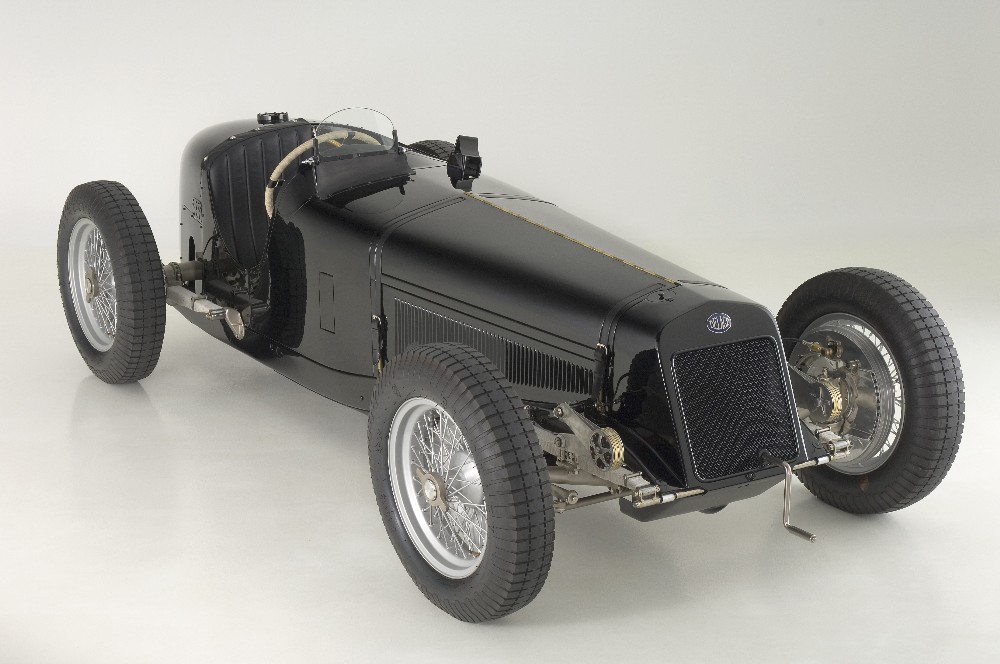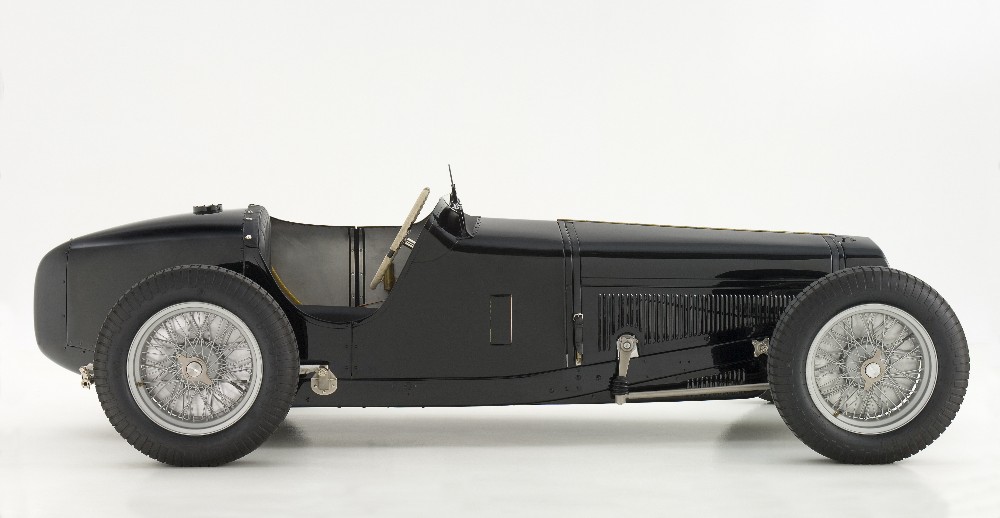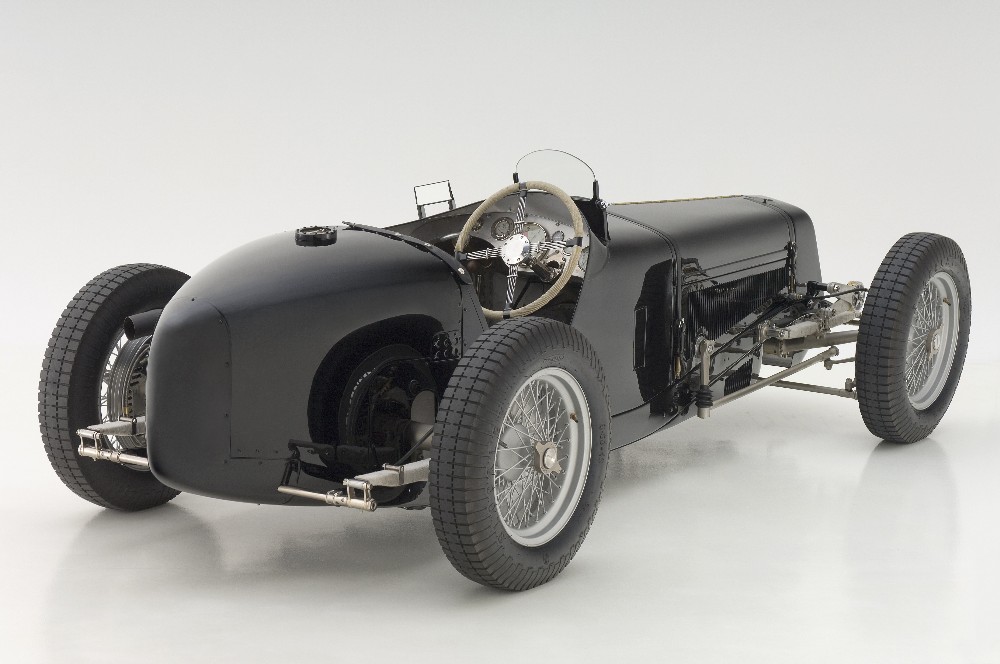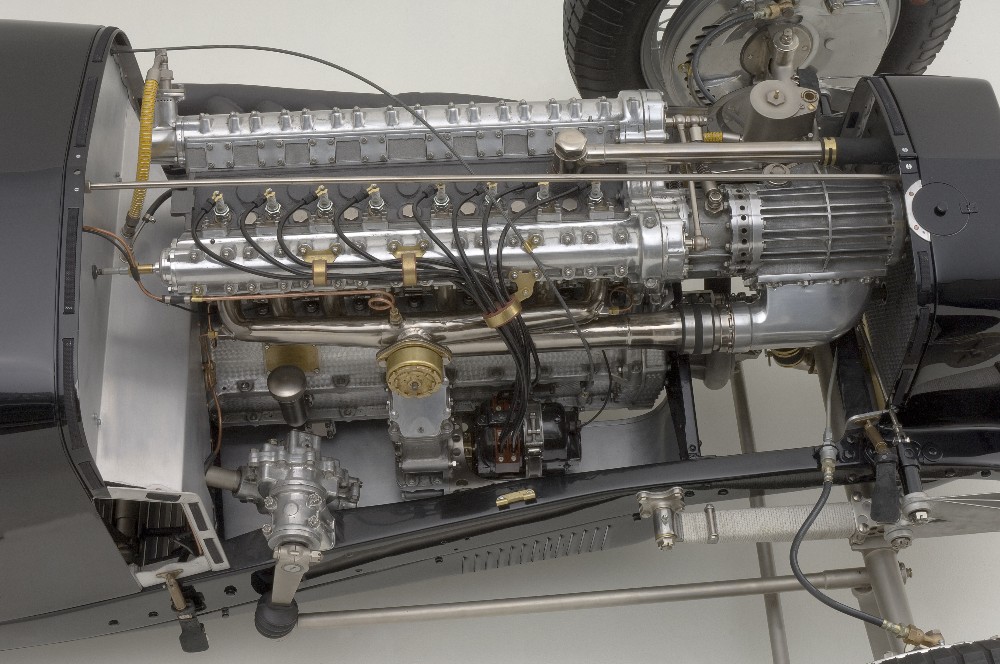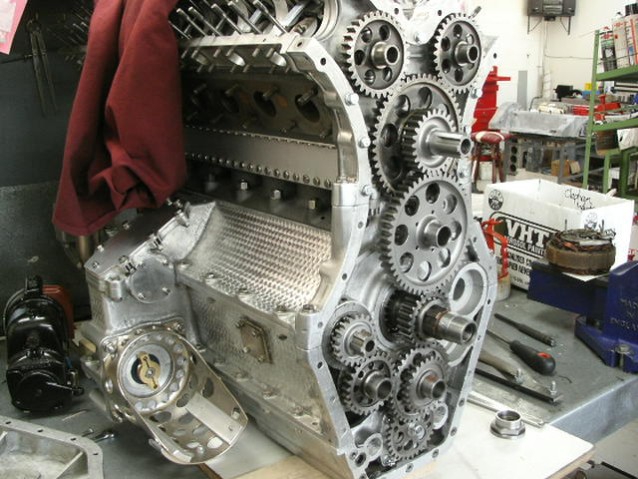Peter Giddings Racing
1926 DELAGE 15-S-8, chassis number 4
In 1913, a new Delage Type Y set the fastest lap time at the French Grand Prix at Le Mans. Two Delage Type Y cars were entered in the 1914 Indianapolis 500, driven by Rene Thomas and Albert Guyot. This Type Y had a four cylinder engine of 4.5 liters, producing 113 horsepower. The engine had dual overhead camshafts and four valves per cylinder. It also had a five-speed gearbox, quite unique for the time. Rene Thomas won the 1914 Indy 500 with an average speed of 82.474 mph and Guyot finished third in his Delage. In 1916, The Delage Type S had a four cylinder engine with four valves per cylinder, dual overhead camshafts, dual carburetors and fully desmodromic valve actuation. Barney Oldfield drove one of these cars to 5th place in the 1916 Indy 500. Delage then developed a 2 liter V12 for the 1923 Grand Prix season. This engine had dual overhead camshafts on each bank of cylinders. For 1925, this engine was supercharged and developed about 205 horsepower. This car had modest success, but was to be followed by Delage’s masterpiece. The 1926-1927 Grand Prix formula stipulated 1500 cc engine capacity, single-seat bodies with 80 cm minimum width and a minimum weight of 600 kg for 1926 ( 700 kg for 1927). Riding mechanics were no longer required, so the engine and gearbox could be offset towards the mechanics side of the car, thus allowing a lower seating position for the driver. Delage engineer, Albert Lory, was assigned to design and develop a Grand Prix car to these specifications. Lory created the Delage 15-S-8, jewel-like straight 8 engine of 1500 cc. Four cars were built for the 1926 season. When introduced in 1926, the Delage suffered from unforeseen flaws. A large single exhaust pipe ran down the right side of the body. The heat from the exhaust roasted the drivers and the design allowed the exhaust gases to be sucked back into the cockpit with the unfortunate driver. The drivers suffered burns on their feet and legs and complained of sickness due to breathing the fumes from the fuel mixture used. The Delage design was so superior, however, that even with repeated stops to cool off the drivers with water and give them a few breaths of fresh air, or even to substitute relief drivers, they were able to win the Grand Prix at Brooklands, and have a second place finish at the Grand Prix of Europe and a third place finish at the Grand Prix of Spain. The four Delage 15-S-8 race cars were then revised for 1927. The exhaust was relocated to the left side of the engine. In this configuration, the Delage engine was the pinnacle of engine design at the time. The 1488 cc engine has a bore of 55.8 mm (2.20 in) and stroke of 76.0 mm (2.99 in). A large single Roots-type supercharger is driven from the front of the camshaft gear train at the front of the engine. Running at engine speed, the blower produces about 7.5 psi of boost. The engine compression ratio is 6.5:1.
The Delage engine includes a single iron casting comprising the head-block unit. The hemispherical combustion chamber has two valves inclined at 50 degrees from the vertical. The intakes are 31 mm and the exhausts are 29 mm. Removable valve guides are essential to allow the valves to be inserted and withdrawn from the bottom of the cylinders. A central spark plug, originally 18 mm, communicates with the combustion chamber through an 8 mm aperture, a common design practice of the time. This view shows the cams and the finger followers that were between the cam and the valve stem end. Triple coil valve springs were used to enable the high rpms.
The engine cutaway reveals the exquisite detail design, casting, and machining, including a billet crankshaft running in nine ball-bearing main bearings. The rod bearings are all roller bearings. There are 20 meticulously cut close tolerance gears comprising the drive to the dual overhead camshafts and accessory drives; each gear has its own roller bearing. Pomeroy counted 62 roller and ball bearings in the engine supplied to him for analysis. This incredible design enabled the Delage to produce over 170 bhp at 8,000 rpm, an engine speed unmatched at the time, and yet 8,000 rpm was a safe and reliable rev limit.
The 15-S-8 dry sump oil system used two pressure pumps. One pump delivered oil to the crankshaft. The other pressure pump lubricated the camshafts, the supercharger, and the gear trains that drove them and the other accessories. A single scavenge pump removed oil from the sump through a screened central pickup. A ladder of pipes within the sump supplied oil to each of the nine main bearing caps, which were integral with the lower half of the split aluminum crankcase. Fuel was provided by a single large horizontal Cozette carburetor on the left of the supercharger. A delivery pipe ran from the blower along the right side of the engine to the center of an eight branch inlet manifold which has a blow-off valve at its center to protect the blower from backfires. The fuel consisted of 40% benzol, 40% petrol, 20% methanol, and a bit of ether to aid in starting. On the left side of the engine a fabricated steel exhaust manifold gathers the exhaust gasses and feeds them through a single exhaust pipe. The engine and its attached five-speed gearbox were now offset four inches to the left of the centerline to balance the driver’s weight and allow him to sit lower in the chassis. The very long engine and gearbox assembly is attached to the frame at its nose and at the clutch housing and adds little to the stiffness of the frame. As a result, the frame is more flexible than most contemporaries, and the car has a reputation for weaving and front wheel patter during braking and cornering. ---------------------------------------------------------------------------------------------------- 1927 Delage 15-S-8 Specifications
------------------------------------------------------------------------------------------------------- Regardless, the Delage 15-S-8 was Europe’s finest 1.5 liter racing car, and was the crowning glory in the career of Louis Delage. Delage was unbeatable in the 1927 Grand Prix season and number one works driver Robert Benoist was proclaimed World Champion. Benoist won all the Grand Prix races and in the Grands Prix of France and Britain, Delages took the top three places. Delage withdrew from Grand Prix racing after the 1927 season and concentrated on road cars. However, the Delage 15-S-8, in the hands of privateers, remained competitive in voiturette racing through the thirties, and even held its own with the Alfa 158 after World War II. ------------------------------------------------------------------------------------------------------- Delage 15-S-8 Competition Record
------------------------------------------------------------------------------------------------------- After the Delage factory withdrew from Grand Prix racing, the four racing cars were sold. Delage 15-S-8, chassis number 4, was sold to Louis Chiron who entered it at the Indianapolis 500 for the 1929 race. Chiron finished 7th on the Indy oval in a car designed for road racing. Chassis No. 4 was then sold to Robert Senechal in France. In 1930 and 1931 Robert Senéchal raced chassis no. 4 in the French Grand Prix finishing sixth (at Pau in 1930) and fifth (at Montlhéry in 1931) as well as racing in the 1931 Italian Grand Prix at Monza. In 1932 it was acquired by Earl Howe to replace the 15-S-8 Delage (number 3) he bent around a tree at Monza. Howe raced #4 at Avus and Dieppe in 1933 and again at Avus in 1934 (now fitted with a pre-selector gearbox and 16 inch brakes). At Donington in 1934 Howe finished fourth in the Nuffield Trophy and third at the Circuit des Planques at Albi. A third place in the Grand Prix de Berne in Switzerland in 1935 marked the end of Howe’s ownership. Prince Chula Chakrabongse then acquired Seaman’s highly successful Delage for his cousin Prince Bira to drive. However, nothing came of this, as Bira preferred to drive his ERAs and Maserati 8CM #3011. After the war Parnell assembled three cars from the vast array of parts, and individual cars somewhat lost their identity. The result was three Delage cars, two with the new Rubery Owen 1937 I.F.S. [Chula] chassis frames, and one with the 1926/27 Seaman-Giulio Ramponi modified chassis frame. Some years ago, 15-S-8 chassis no. 4 was acquired at auction by Brazilian Abba Kogan, and more recent work has included a careful re-restoration by Auto Restorations of New Zealand to return it to its original specification, as raced in 1936 by Dick Seaman in voiturette competition. Work has included the removal of the pre-selector gearbox, and installation of a five-speed overdrive gearbox as per the original 1926/27 version. With owner / custodian Peter Giddings, Delage 15-S-8 chassis no. 4 had yet another career, this time in vintage / historic racing. In 2021, the Delage has now moved on to another owner/custodian. The video below gives a brief sample of the look and sound of the Delage at speed. (Click on the arrow to start the video)
1926 Delage in the black livery as raced by Richard Seaman. Photo by Dennis Gray
The jewel-like 1500 cc engine of Delage #4. Photo by Dennis Gray.
Delage #4 takes the checkered flag for another win. Richard Seaman at the Isle of Man, 1936.
Louis Chiron in the Delage #4 destined for the 1929 Indianapolis 500. The photo was taken at the Delage works, the gentleman on the right is engineer/designer Albert Lory.
Front view of the restored Delage.
Side view of the restored Delage.
Rear view of the restored Delage.
A view of the engine and supercharger of the Delage.
The incredible gear train of the Delage, all the gears run on ball or roller bearings. Photo from a Delage article in Veloce Today. |
